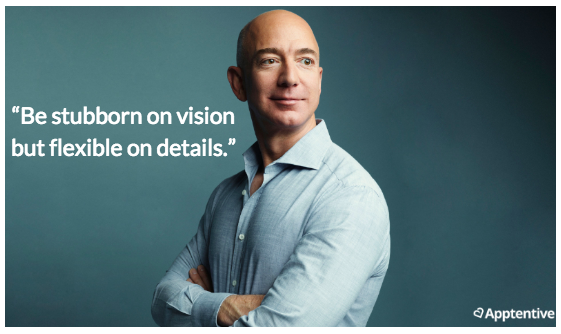
Be stubborn on vision but flexible on details.
– Jeff Bezos
Have you ever wondered how visionaries like Bill Gates and Jeff Bezos develop long term vision that leads to successful business that transform people’s life? Let’s decode one of the key skills needed to become a visionary. At least it will make you a better product manager in developing product visions.
Product visionaries don’t have crystal balls to predict the future. Their ability to have very far vision is based on their hard work and the skills they developed over time. One of the key skills is the ability to observe deeply, see the underlying patterns, and generalize them for a sizable market.
An Example of Seeing the Patterns
Let’s do a quick fun exercise. Looking at the evolution of cars, TVs, and telephones, what common patters do you see?
You may start thinking about richer functionalities, faster speed, better sizes, lighter weight, more high tech, etc. Look deeper and focus on demand of these come from. Yes, human being. Product evolution is driven by human demand. What patter do you see? Hang on a second and take a look at human being’s evolution in the following illustration.

Human’s evolution shows that our species is always pursuing higher and higher goals and level of experience. We are really good in developing tools. A tool usually starts as a means of survival and it is lucky for one to even have one, e.g., a caveman got a natural fire to cook some raw meat. It then becomes prevalent and people pursue better performing ones, e.g., a wood burning stove that is easy to light up. Eventually, it evolves into gourmet high end ranges for cooking and barbecue which becomes the center of house hold daily life that everyone loves.
If you generalize this, you will see lots of products go through the journey:
- Scarce resource that is hard to get it. Once you get it, you have no complaints about it, because it’s so much better than nothing.
- Widely available resource that you’d like to choose the ones with your desired characteristics.
- Many more choices available that you’d like to choose the ones that you love and provide you unique experience (e.g., brand, design) in addition to your desired characteristics.
Now, go back and take a look at the car, telephone, and TV evolution. Do you see how they are all following exactly the same pattern?
Generalize The Pattern You Discovered
How does these kinds of patterns connect to our real world? Let’s take Jeff Bezos’ Amazon as an example.
When Amazon was founded, there were limited retail shopping options. Brick-n-mortar stores can only offer limited variety of products due to warehouse limits. There were fragmented remote shopping experience, but you have to find trustworthy vendors for different categories of products. Amazon was created to be “the world’s largest collection” in anticipation of the next stage of the retail. Jeff Bezos realized that Internet and computer software was promising to propel the next several stages of the retail evolution, from more choices for consumers, easier purchasing experience, next day delivery, free return, great product recommendations, and eventually the future shopping experience consumers enjoy and love like unlimited digital products and cashier-less zero-friction Amazon Go. Retail currently is at the late stage #2 mentioned above. It’d be interesting to see who nails the stage #3 with revolutionized shopping experience that consumers fall in love with instead of merely use as a convenient tool.
When Jeff Bezos says “be stubborn on vision”, he saw the underlying pattern of product evolution that is dictated by human evolution with thousands of years of making and will not change over night. Once this vision is clear, you need to stick to it and spend years to build and scale the business to realize the vision.
Conclusion
The complex world is actually connected by a relatively smaller set of rules. Therefore lots of seemingly disconnected things share the same underlying patterns. When you are able to connect new things to existing patterns, you will be able to more accurately predict their evolution direction and thus develop more robust long term product vision.



